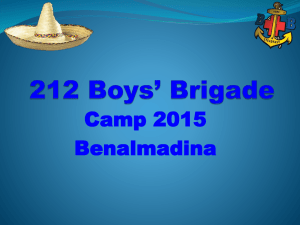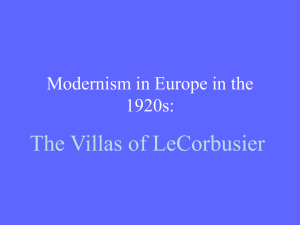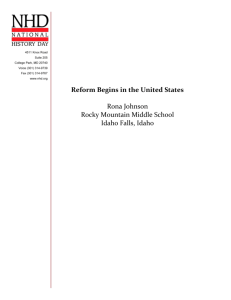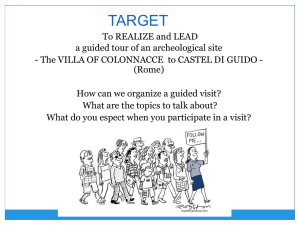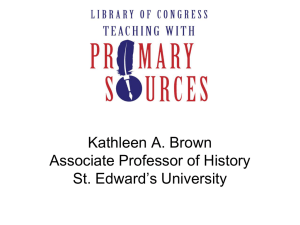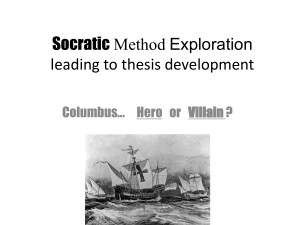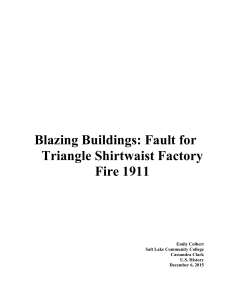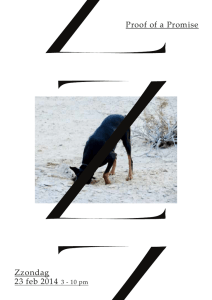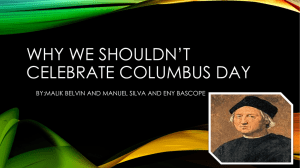Figure 1 - UNT Digital Library
advertisement
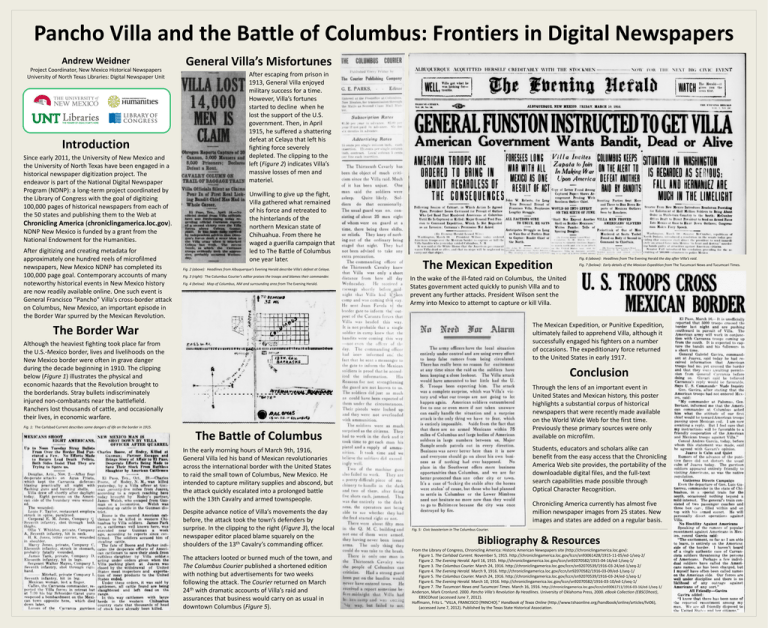
Pancho Villa and the Battle of Columbus: Frontiers in Digital Newspapers Andrew Weidner Project Coordinator, New Mexico Historical Newspapers University of North Texas Libraries: Digital Newspaper Unit Introduction Since early 2011, the University of New Mexico and the University of North Texas have been engaged in a historical newspaper digitization project. The endeavor is part of the National Digital Newspaper Program (NDNP): a long-term project coordinated by the Library of Congress with the goal of digitizing 100,000 pages of historical newspapers from each of the 50 states and publishing them to the Web at Chronicling America (chroniclingamerica.loc.gov). NDNP New Mexico is funded by a grant from the National Endowment for the Humanities. After digitizing and creating metadata for approximately one hundred reels of microfilmed newspapers, New Mexico NDNP has completed its 100,000 page goal. Contemporary accounts of many noteworthy historical events in New Mexico history are now readily available online. One such event is General Francisco “Pancho” Villa's cross-border attack on Columbus, New Mexico, an important episode in the Border War spurred by the Mexican Revolution. General Villa’s Misfortunes After escaping from prison in 1913, General Villa enjoyed military success for a time. However, Villa’s fortunes started to decline when he lost the support of the U.S. government. Then, in April 1915, he suffered a shattering defeat at Celaya that left his fighting force severely depleted. The clipping to the left (Figure 2) indicates Villa’s massive losses of men and materiel. Unwilling to give up the fight, Villa gathered what remained of his force and retreated to the hinterlands of the northern Mexican state of Chihuahua. From there he waged a guerilla campaign that led to The Battle of Columbus one year later. Fig. 2 (above): Headlines from Albuquerque’s Evening Herald describe Villa’s defeat at Celaya. Fig. 3 (right): The Columbus Courier’s editor praises the troops and blames their commander. Fig. 4 (below): Map of Columbus, NM and surrounding area from The Evening Herald. The Mexican Expedition Fig. 6 (above): Headlines from The Evening Herald the day after Villa’s raid. Fig. 7 (below): Early details of the Mexican Expedition from The Tucumcari News and Tucumcari Times. In the wake of the ill-fated raid on Columbus, the United States government acted quickly to punish Villa and to prevent any further attacks. President Wilson sent the Army into Mexico to attempt to capture or kill Villa. The Mexican Expedition, or Punitive Expedition, ultimately failed to apprehend Villa, although it successfully engaged his fighters on a number of occasions. The expeditionary force returned to the United States in early 1917. The Border War Although the heaviest fighting took place far from the U.S.-Mexico border, lives and livelihoods on the New Mexico border were often in grave danger during the decade beginning in 1910. The clipping below (Figure 1) illustrates the physical and economic hazards that the Revolution brought to the borderlands. Stray bullets indiscriminately injured non-combatants near the battlefield. Ranchers lost thousands of cattle, and occasionally their lives, in economic warfare. Conclusion Through the lens of an important event in United States and Mexican history, this poster highlights a substantial corpus of historical newspapers that were recently made available on the World Wide Web for the first time. Previously these primary sources were only available on microfilm. Fig. 1: The Carlsbad Current describes some dangers of life on the border in 1915. The Battle of Columbus Students, educators and scholars alike can benefit from the easy access that the Chronicling America Web site provides, the portability of the downloadable digital files, and the full-text search capabilities made possible through Optical Character Recognition. In the early morning hours of March 9th, 1916, General Villa led his band of Mexican revolutionaries across the international border with the United States to raid the small town of Columbus, New Mexico. He intended to capture military supplies and abscond, but the attack quickly escalated into a prolonged battle with the 13th Cavalry and armed townspeople. Despite advance notice of Villa’s movements the day before, the attack took the town’s defenders by surprise. In the clipping to the right (Figure 3), the local newspaper editor placed blame squarely on the shoulders of the 13th Cavalry’s commanding officer. The attackers looted or burned much of the town, and The Columbus Courier published a shortened edition with nothing but advertisements for two weeks following the attack. The Courier returned on March 24th with dramatic accounts of Villa’s raid and assurances that business would carry on as usual in downtown Columbus (Figure 5). Chronicling America currently has almost five million newspaper images from 25 states. New images and states are added on a regular basis. Fig. 5: Civic boosterism in The Columbus Courier. Bibliography & Resources From the Library of Congress, Chronicling America: Historic American Newspapers site (http://chroniclingamerica.loc.gov): Figure 1. The Carlsbad Current. November 5, 1915. http://chroniclingamerica.loc.gov/lccn/sn93061428/1915-11-05/ed-1/seq-2/ Figure 2. The Evening Herald. April 16, 1915. http://chroniclingamerica.loc.gov/lccn/sn92070582/1915-04-16/ed-1/seq-1/ Figure 3. The Columbus Courier. March 24, 1916. http://chroniclingamerica.loc.gov/lccn/sn92070539/1916-03-24/ed-1/seq-2/ Figure 4. The Evening Herald. March 9, 1916. http://chroniclingamerica.loc.gov/lccn/sn92070582/1916-03-09/ed-1/seq-1/ Figure 5. The Columbus Courier. March 24, 1916. http://chroniclingamerica.loc.gov/lccn/sn92070539/1916-03-24/ed-1/seq-1/ Figure 6. The Evening Herald. March 10, 1916. http://chroniclingamerica.loc.gov/lccn/sn92070582/1916-03-10/ed-1/seq-1/ Figure 7. The Tucumcari News and Tucumcari Times. March 16, 1916. http://chroniclingamerica.loc.gov/lccn/sn93061711/1916-03-16/ed-1/seq-1/ Anderson, Mark Cronlund. 2000. Pancho Villa's Revolution By Headlines. University of Oklahoma Press, 2000. eBook Collection (EBSCOhost), EBSCOhost (accessed June 7, 2012). Hoffmann, Fritz L. "VILLA, FRANCISCO [PANCHO]." Handbook of Texas Online (http://www.tshaonline.org/handbook/online/articles/fvi06), (accessed June 7, 2012). Published by the Texas State Historical Association.
